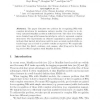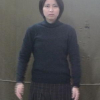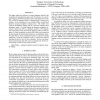757 search results - page 11 / 152 » Recognition Performance of a Structured Language Model |
HAPTICS
2002
IEEE
14 years 19 days ago
2002
IEEE
We present the results of using Hidden Markov Models (HMMs) for automatic segmentation and recognition of user motions. Previous work on recognition of user intent with man/machin...
IJCNLP
2004
Springer
14 years 1 months ago
2004
Springer
The paper discusses two policies for recognizing NEs with complex structures by maximum entropy models. One policy is to develop cascaded MaxEnt models at different levels. The ot...
ICPR
2008
IEEE
14 years 9 months ago
2008
IEEE
Sign language is used for communicating to people with hearing difficulties. Recogntion of a sign language image sequence is challenging because of the variety of hand shapes and ...
ICASSP
2010
IEEE
13 years 7 months ago
2010
IEEE
This paper studies the influence of n-gram language models in the recognition of sung phonemes and words. We train uni-, bi-, and trigram language models for phonemes and bi- and...
ICDAR
2005
IEEE
14 years 1 months ago
2005
IEEE
After developing a model free table recognition system we wanted to tune parameters in order to optimize the recognition performance. Therefore we developed a benchmarking environ...



